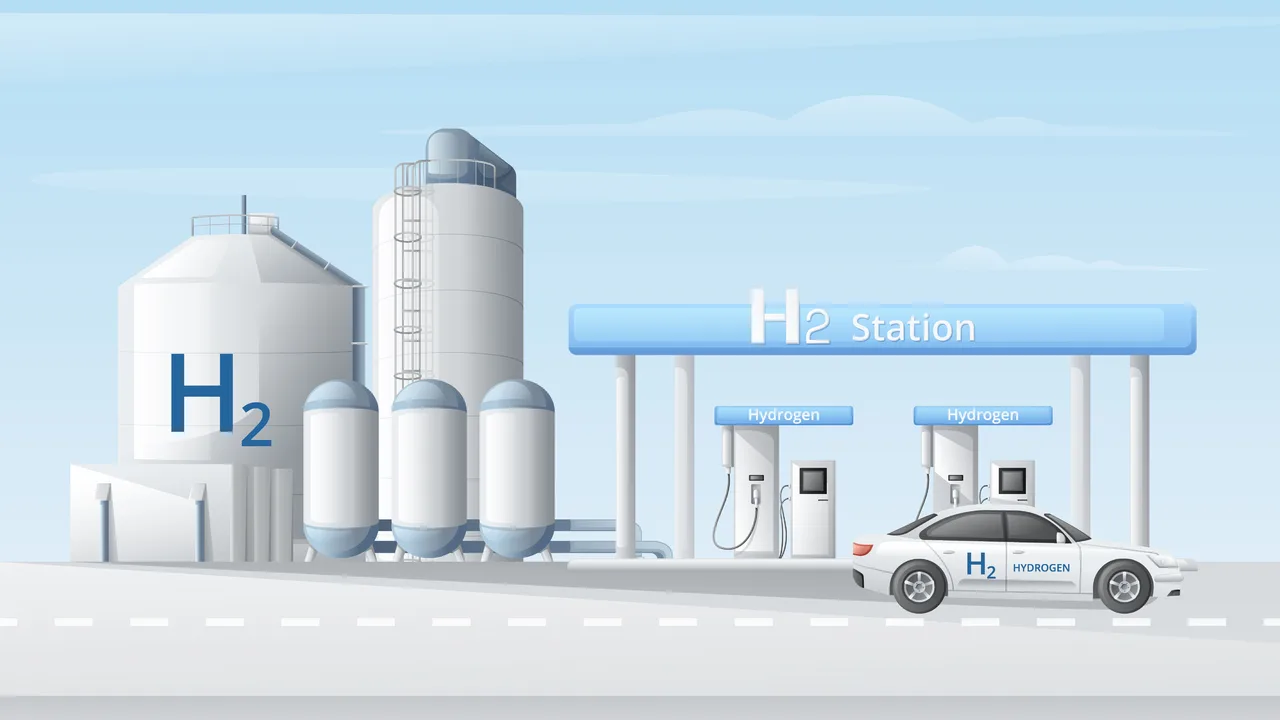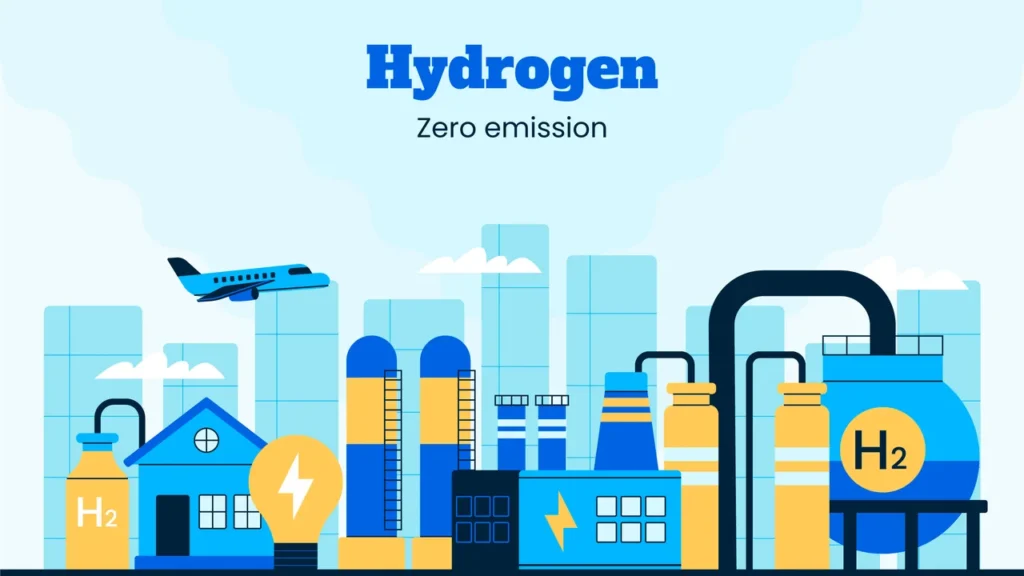Hydrogen energy is emerging as one of the most promising solutions for a sustainable and carbon-neutral future. As countries accelerate their transition away from fossil fuels, hydrogen is gaining global recognition as a clean, flexible, and powerful energy carrier. Its ability to store, transport, and release energy efficiently makes it a key enabler of the clean energy transformation.
Understanding Hydrogen Energy
At its core, hydrogen energy refers to the use of hydrogen gas (H₂) as a source of power or storage medium. Unlike traditional fuels, hydrogen produces only water vapor when used in fuel cells or burned in controlled environments. This zero-carbon characteristic positions it as a vital tool in efforts to achieve net-zero emissions.
There are three main types of hydrogen based on production methods:
- Gray hydrogen: Produced from natural gas through steam methane reforming, releasing significant CO₂.
- Blue hydrogen: Similar to gray but incorporates carbon-capture technology to reduce emissions.
- Green hydrogen: Generated using renewable electricity to split water molecules—an entirely emission-free process.
Among these, green hydrogen stands out as the most sustainable and future-ready option, aligning perfectly with the global clean-energy agenda.
How Hydrogen Works in the Energy Cycle
Hydrogen serves as both a fuel and an energy storage medium. Through a process known as electrolysis, water is split into hydrogen and oxygen using an electrical current. The devices responsible for this process are called electrolyzers. When powered by renewable sources such as wind or solar, the resulting hydrogen is considered “green.”
This hydrogen can then be stored in tanks or underground caverns and later reconverted into electricity through fuel cells or combustion. Its versatility makes it an ideal complement to intermittent renewable resources, offering reliable energy during low-generation periods.
The Rise of Green Hydrogen

As governments worldwide commit to reducing carbon emissions, green hydrogen has emerged as a cornerstone of their clean-energy strategies. The technology is advancing rapidly, with the cost of renewable electricity falling and the efficiency of electrolyzers improving every year. According to the International Renewable Energy Agency (IRENA), global hydrogen demand could increase six-fold by 2050, with green hydrogen accounting for the majority of production.
Comparing Hydrogen Production Pathways
| Type | Energy Source | CO₂ Emissions | Production Cost |
|---|---|---|---|
| Gray Hydrogen | Natural Gas | High | Low |
| Blue Hydrogen | Natural Gas + CCS | Moderate | Medium |
| Green Hydrogen | Renewables (Wind, Solar) | Zero | Decreasing |
This evolution toward clean production reflects how hydrogen energy is no longer a futuristic concept but an active component of industrial decarbonization. Major economies in Europe, Asia, and North America are investing billions to scale up hydrogen projects that integrate seamlessly with renewable grids.
Applications of Green Hydrogen
- Power generation: Hydrogen-fueled turbines can provide on-demand electricity, balancing renewable fluctuations.
- Industrial use: Acts as a carbon-free substitute for coal and gas in steelmaking, ammonia production, and chemical refining.
- Transportation: Hydrogen fuel-cell vehicles (FCEVs) offer long range and quick refueling, ideal for heavy-duty trucks, buses, and even aircraft.
- Energy storage: Enables seasonal storage, converting surplus renewable power into hydrogen and back when needed.
Electrolyzers: The Engine of Hydrogen Production
The efficiency and scalability of hydrogen energy depend heavily on the performance of electrolyzers. These devices are the heart of green hydrogen production, and their design determines both cost and environmental impact.
Types of Electrolyzers
- Alkaline Electrolyzers: The oldest and most established technology, offering high reliability but limited flexibility to variable power inputs.
- PEM (Proton Exchange Membrane): Compact and responsive, ideal for coupling with solar and wind farms. Slightly higher cost but rapidly improving efficiency.
- Solid Oxide Electrolyzers (SOE): Operate at high temperatures, delivering excellent efficiency when integrated with industrial heat sources.
Continuous innovation in membrane materials, catalysts, and system integration is driving down costs while improving durability. As large-scale hydrogen hubs come online, production efficiency is expected to reach unprecedented levels.
Hydrogen Energy in the Global Transition
The inclusion of hydrogen energy in national energy plans underscores its versatility and strategic importance. Unlike solar or wind, which depend on weather, hydrogen can be produced, stored, and transported globally. It bridges the gap between renewable generation and end-use sectors like transport and heavy industry.
Countries such as Japan and Germany are already implementing hydrogen roadmaps that prioritize domestic production, import terminals, and fuel-cell adoption. Meanwhile, energy giants are converting existing natural-gas pipelines into hydrogen networks, creating the foundation for a new international energy economy.
Economic and Infrastructure Impact of Hydrogen Energy
The development of hydrogen energy infrastructure has profound economic implications. From production facilities and pipeline systems to refueling networks, the entire hydrogen supply chain creates a surge in industrial activity and job opportunities. According to global estimates, the hydrogen economy could be worth over USD 2.5 trillion by 2050, employing millions worldwide.
Investments in green hydrogen plants and electrolyzers are revitalizing industrial regions once dominated by fossil fuels. Countries are repurposing decommissioned refineries into hydrogen hubs, while ports are being redesigned to handle liquid hydrogen shipping. This shift not only diversifies energy portfolios but also strengthens energy security by reducing dependence on imported fossil fuels.
Building Hydrogen Infrastructure
- Production Sites: Large-scale facilities powered by renewable energy sources generate green hydrogen for industrial and domestic use.
- Storage Systems: Underground caverns, compressed tanks, and ammonia conversion are key methods for storing hydrogen safely and efficiently.
- Transportation Pipelines: Upgraded gas networks enable the direct flow of hydrogen across borders, integrating regional energy markets.
- Distribution and Refueling: Hydrogen refueling stations are expanding, particularly in Europe, Japan, and the United States, to support growing fuel-cell vehicle fleets.
Environmental Benefits of Hydrogen Energy
Transitioning to hydrogen energy offers unmatched environmental benefits. When hydrogen is produced from renewable sources, its use results in zero carbon emissions and minimal air pollutants. Replacing fossil-based fuels with hydrogen significantly reduces greenhouse gases, supporting global climate goals.
One of the most important advantages of green hydrogen is its ability to decarbonize sectors that are difficult to electrify. Heavy industries such as steelmaking, cement production, and chemical processing can integrate hydrogen-based systems to reduce emissions by up to 90%. Furthermore, hydrogen-powered fuel cells emit only water, improving air quality in densely populated urban areas.
Resource Efficiency and Circular Sustainability
Hydrogen’s role extends beyond emissions reduction. Through electrolyzers, renewable electricity can be stored as hydrogen during surplus production and reconverted into power when needed, creating a circular and balanced energy system. This mechanism ensures that renewable sources like wind and solar are fully utilized, minimizing waste and grid instability.
Challenges to Widespread Hydrogen Adoption
Despite its potential, hydrogen energy still faces significant challenges before achieving mainstream adoption. The first and most pressing issue is cost. Producing green hydrogen remains more expensive than conventional fuels, mainly due to the high capital cost of electrolyzers and renewable electricity inputs.
Another challenge is the lack of transport and storage infrastructure. Hydrogen molecules are small and highly reactive, requiring specialized containment systems and materials to prevent leakage. Additionally, efficiency losses during conversion—from electricity to hydrogen and back—remain a barrier to economic viability.
Safety and Public Perception
Hydrogen’s flammability often raises safety concerns. However, modern engineering standards and advanced leak detection technologies have made hydrogen handling as safe as traditional fuels. Educating the public and industries about these safety measures is essential to gaining wider acceptance and investment confidence.
Solutions and Technological Innovations
- Economies of Scale: Expanding production volumes will reduce costs through mass manufacturing of electrolyzers and fuel-cell systems.
- International Collaboration: Countries are forming hydrogen alliances to standardize certification, trade, and safety protocols.
- Integration with Renewables: Co-locating hydrogen facilities near wind or solar farms minimizes energy transmission losses and maximizes efficiency.
- New Materials: Research into advanced membranes and catalysts is improving durability and lowering the cost of hydrogen production.
Global Hydrogen Initiatives
Several nations are leading the global hydrogen movement. The European Union has launched a comprehensive Hydrogen Strategy, targeting 40 GW of electrolyzer capacity by 2030. Japan and South Korea are investing heavily in hydrogen vehicles and maritime transport. Meanwhile, countries in the Middle East and Australia are developing large-scale export projects, taking advantage of abundant renewable energy resources.
These initiatives are supported by international organizations like the International Energy Agency (IEA) and the International Renewable Energy Agency (IRENA), which provide policy frameworks, data analysis, and technological guidance to accelerate hydrogen deployment worldwide.
Future Outlook: Hydrogen Energy in 2050 and Beyond
The long-term outlook for hydrogen energy is overwhelmingly positive. As renewable electricity costs continue to fall, the price of green hydrogen will approach parity with fossil-based alternatives. Analysts project that by 2050, hydrogen could supply up to 20% of total global energy demand, making it a key component of a fully decarbonized economy.
In the coming decades, innovations in electrolyzers, AI-based plant optimization, and modular hydrogen systems will make clean hydrogen accessible and affordable across all industries. Hydrogen’s adaptability—serving as a fuel, storage medium, and industrial feedstock—ensures it will remain central to the world’s clean energy future.
Conclusion
The global shift toward hydrogen energy represents a defining chapter in the story of sustainable development. By harnessing the potential of green hydrogen and advancing electrolyzer technologies, humanity is moving closer to a world powered entirely by clean and renewable sources. From powering industries to fueling transportation and stabilizing renewable grids, hydrogen stands as the cornerstone of a resilient and carbon-free energy ecosystem.
As technology evolves and collaboration expands, hydrogen will no longer be viewed as a niche alternative—it will be the backbone of tomorrow’s clean energy transformation.



